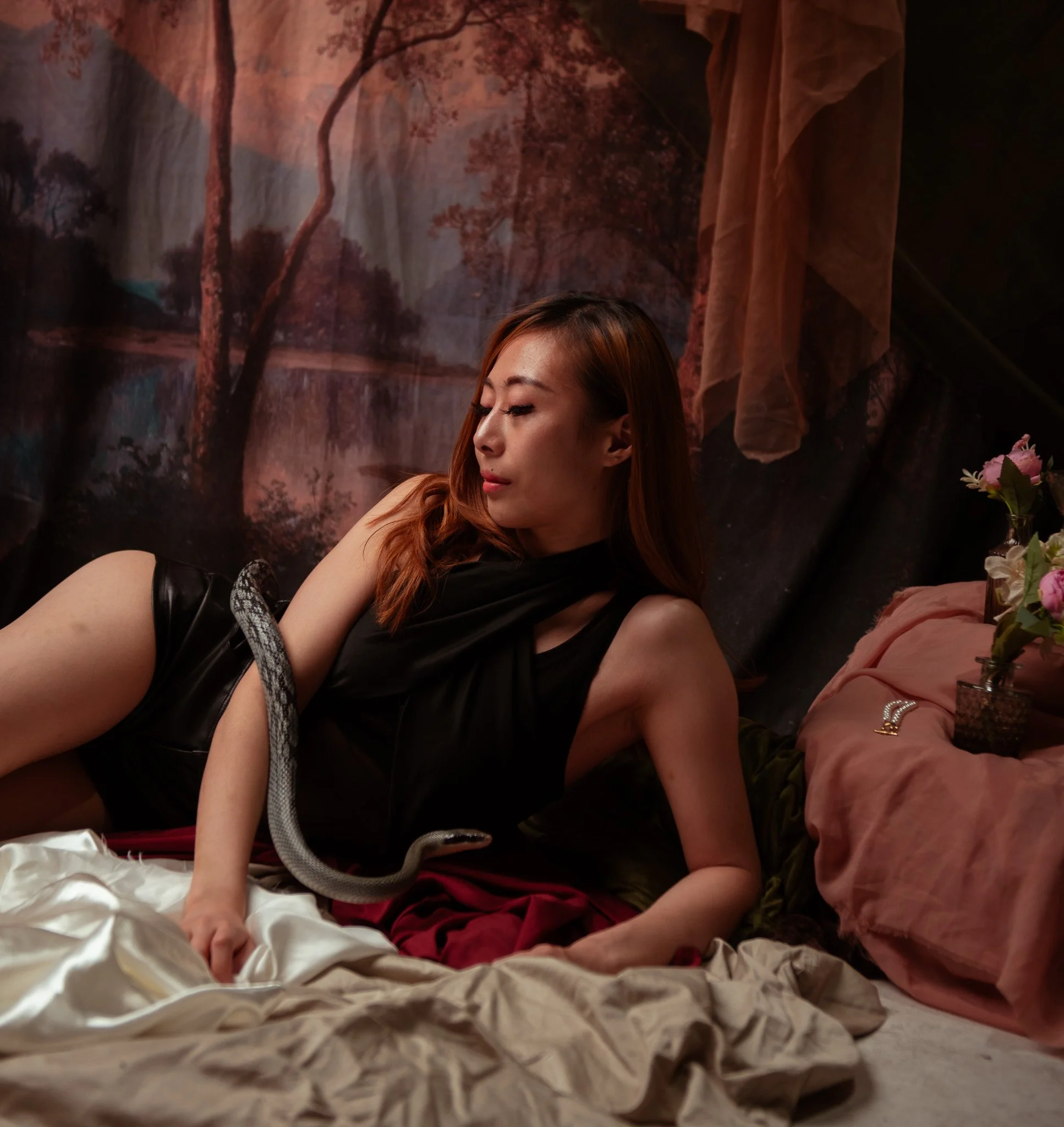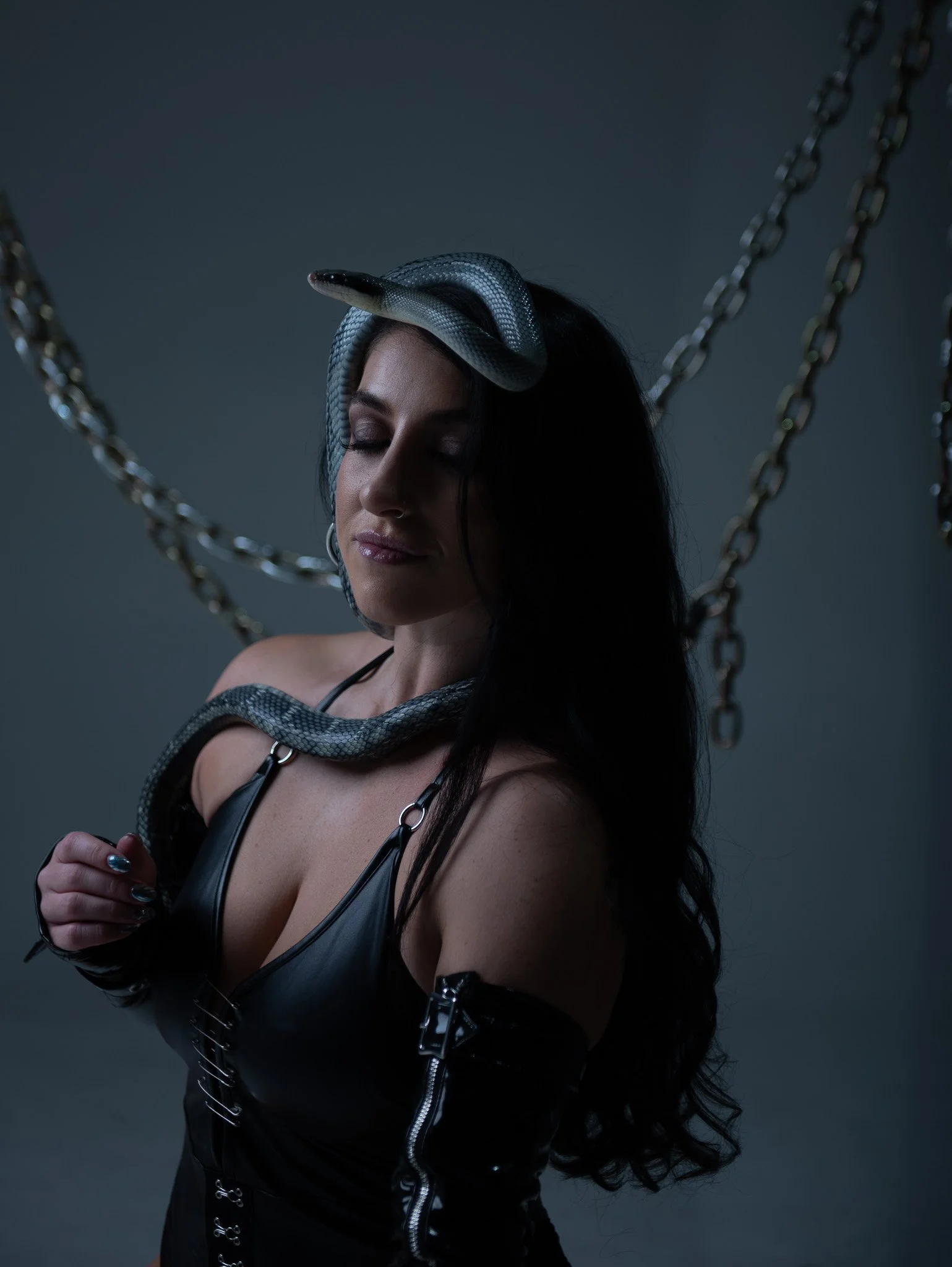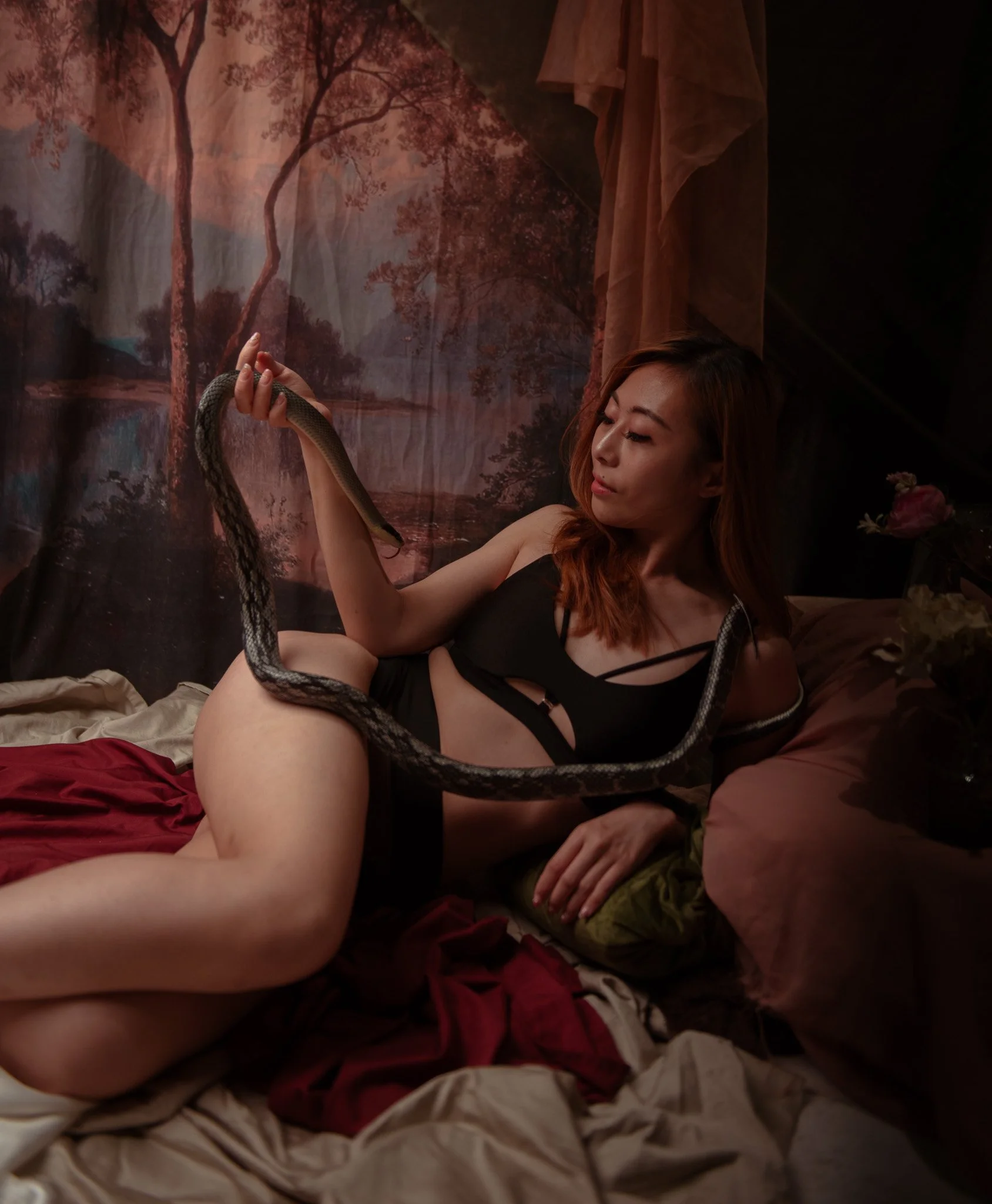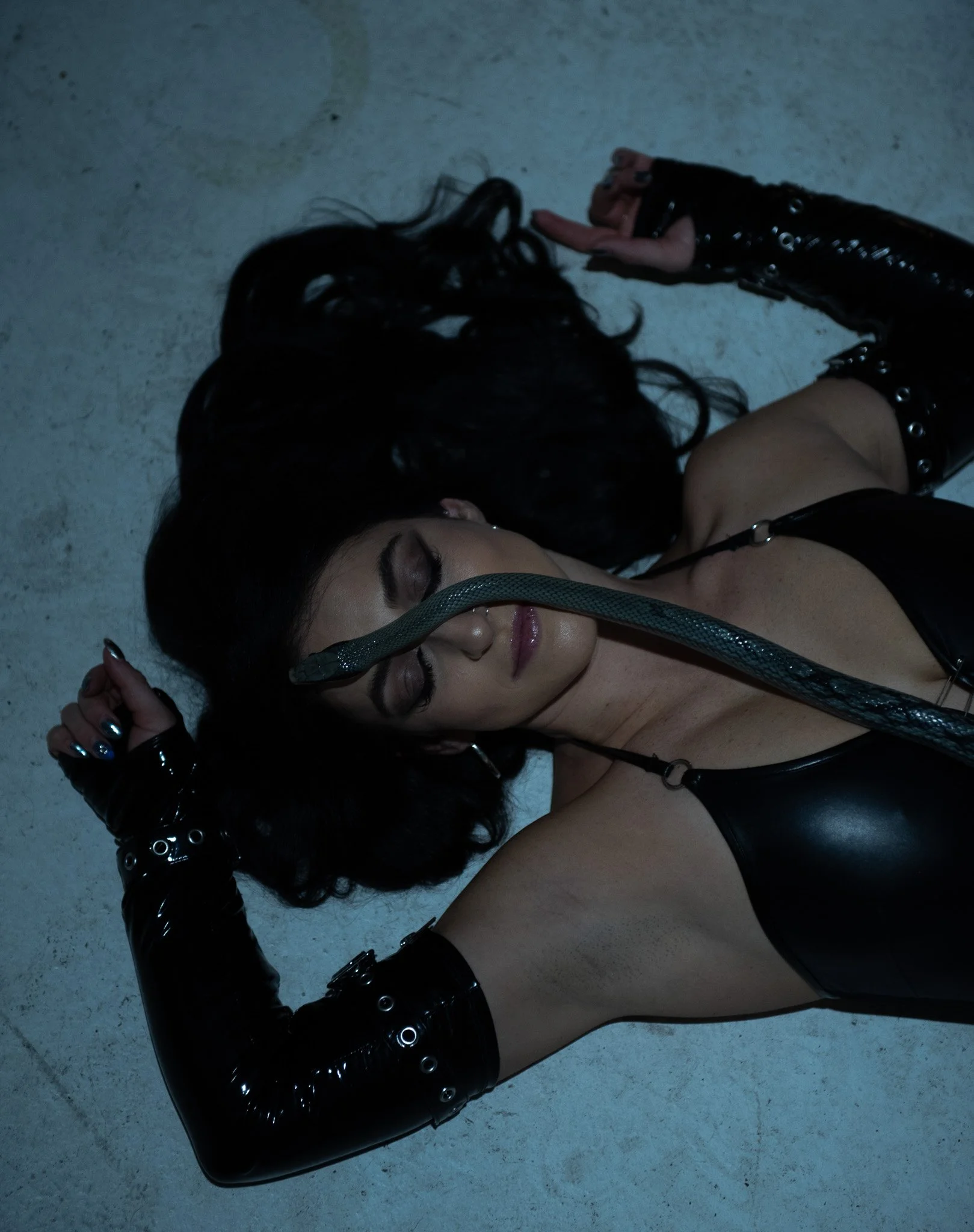Snake Photoshoot : Tips & Tricks






I love a snake shoot - I’ve only done a one using a simple white backdrop, but knew I wanted to do more. I’ve been friends with Melody and she brought the most incredible animal collaborators - they’ve really grown from small little things to…. a little bigger haha. Tips and Tricks for your future snake photoshoot are at the bottom!
Set 1: Painterly and Soft.
I drew inspiration from this Marilika because I loved the painter like feel. Here, I went in with soft fabrics, flowing lines, and rich. It felt like something out of a fantasy dreamscape, and the snake became something mythic.
Then we pivoted.
Set 2: Grunge & Chains.
Same snake, different world. I went in the complete opposite direction - Think metal, darkness, and edge. We leaned into the tension of the snake’s presence—shot against heavy chains, with dramatic lighting and moody tones. The result felt bold and a little dangerous.
Two wildly different moods, one shoot. I’m still in awe of how much ground we covered—and how the snake brought a story to both sides (the real star of the show)
Snake Photography Tips: Working Safely & Creatively with Serpents
Work with a Professional Handler: Always bring in someone experienced with reptiles. They’ll help manage the snake’s behavior, ensure safety for the model, and reduce stress for the animal.
Pick the Right Snake: Not all snakes are suited for photography. Ball pythons are a common choice — docile, slow-moving, and comfortable being held. Avoid overly active or aggressive species. The handler should know this.
Keep the Set Calm Snakes are sensitive to sudden movement and loud noise. Keep the set quiet and movements slow. Limit the number of people present to reduce stress.
Time Your Shoot. Snakes are often more relaxed after feeding (but not immediately after — wait at least 24–48 hours). Morning sessions can work well as snakes warm up to movement with light. But also - snakes wander and do what they want. plan for more buffer time not less.
Mind the Temperature Snakes are cold-blooded and may become inactive if it’s too cold — or agitated if it’s too hot. Ask the handler about their ideal comfort range and try to maintain that.
Discuss Comfort and Boundaries If you’re working with a model, ensure they’re truly comfortable with snakes and know what to expect — especially how snakes move, tighten, or shift while being held. My two clients had not worked with a snake before - and that’s ok! It’ll just take a little extra time for them to get comfortable with the snake. We also had a short briefing at the beginning.
Pose with Intention Use a snake to accentuate curves or guide the viewer’s eye. Try close-ups with the snake coiled around the hand, shoulder, or even face (only if everyone’s comfortable and safe).
Use Dramatic Lighting Snakes have gorgeous scales that catch directional light. Use hard light for texture or soft light for a more ethereal effect. Side lighting works especially well for shadows and mood. Also - edit in post because you can bring those scales out even more there.
Bonus: Creative Concept Ideas
Medusa: Snake crown with green or stone-colored styling.
Grunge Glam: Chains, dark makeup, snake as jewelry.
High Fashion: Minimal background, all focus on the model and snake.
Mythical: Golden tones, mirrors, light beams, surreal props.